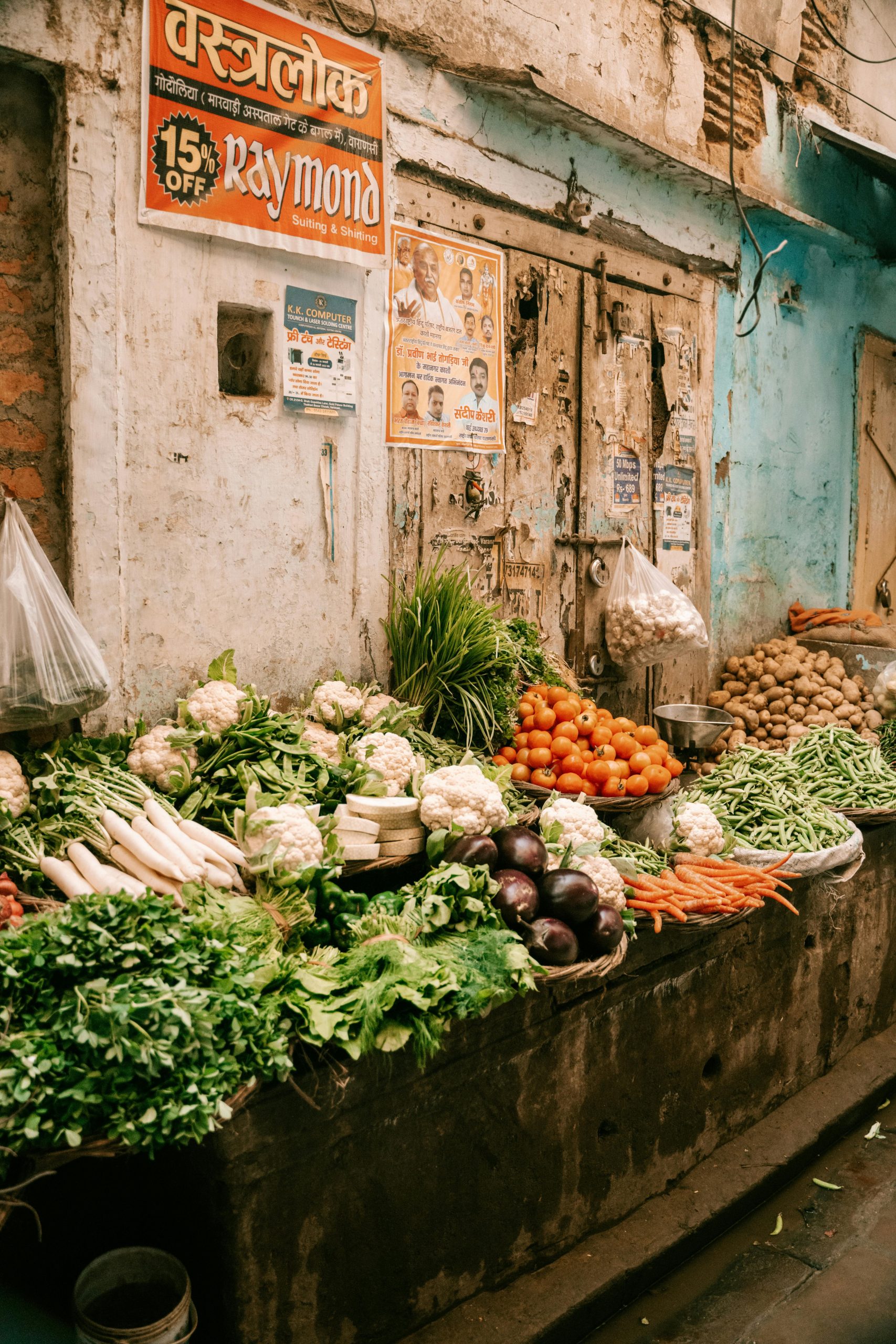I have almost daily discussions with sustainable warriors who think we should never fly again, because it is impossible to compensate for such a polluting flight. If it were up to them, we would all live in a power-free shack on the moors, growing our own vegetables and making as little impact on the planet as possible. If that’s your thing, fine (and to be fair, having your own sustainable farm or vineyard in Tuscany sounds perfect to me!). But I think if we all make slightly better choices, we will all go a long way.
I think travel has a lot of value. And I think that taking a flight every now and then should be fine. Not every month, not three times a year halfway around the world, but once a year a nice long trip, for example, should be possible. And if we fly in moderation, we can compensate for that flight by making some (temporary) adjustments in daily life. So more than planting trees, but not living in a hut on the heath with no facilities. Here are my tips!
Flight compensation by planting trees
Let’s start with the most well-known form of flight compensation: tree planting. Many airlines and travel companies offer this option. It sounds great: plant a tree and your flight is compensated. Unfortunately, the reality is not so easy. If it were, climate change wouldn’t even be a topic.
An average tree absorbs about 22 kg of CO2 per year. Sounds a lot, right? But if we look at the emissions of a return flight from Amsterdam to New York (about 1,500 kg of CO2), you would have to plant as many as 68 trees to offset that one flight. Not to mention the fact that it takes years for those trees to mature and absorb CO2 optimally.

If everyone on that flight to New York plants a tree, you do end up with a small forest. But that €0.21 you can add to your flight is thus calculated on the contribution of all passengers, to offset exactly that flight. Nothing more than that. So if only 3 people contribute, not even 1 tree can be planted by a long shot. You can then choose to plant a tree yourself, through various initiatives. Then you will have already done more than you would compensate via the airline. But that one tree won’t get you very far.
Don’t get me wrong: planting trees is always a good initiative. Just like a donation to JustDiggit, for instance. It helps restore ecosystems and improve air quality. The biggest problem is that the compensation through the airline is not even 1 tree, and that even planting 1 tree, does extremely little. I myself plant a tree before every flight, and sometimes just in between flights, through WoodYouCare. But if you really want to make (some) effort to offset your flight emissions, there are pretty easy ways to make more of an impact in your daily life.
Flying in perspective: what is the impact?
Just some numbers. We love to hate on flights, but in the big picture, flights are not the biggest problem around climate change. Did you know that aviation is responsible for only 2% of global CO2 emissions? By comparison, livestock farming accounts for about 14.5% of global greenhouse gas emissions, and food waste contributes to about 8% of total emissions. Conclusion: we can make a bigger impact with what we eat, than with how we travel.
This does not mean we can fly indefinitely without worrying. Every form of emission counts. And 1 flight, of course, does directly account for a mega-sized part of your annual footprint. But it does show that with adjustments in our daily lives, we can make a significant impact even bigger than avoiding a flight.
Mijn persoonlijke ervaring
When I started my sustainable travel blog in 2022, I still took 9 (single) flights that year. But since I don’t have a driving licence, I do everything else by sustainable transport. I decided to calculate my transport footprint, without even considering the fact that I am a vegetarian and buy little stuff.
The result? My footprint was 30% LESS than the Dutch average! While the Netherlands is not exactly a textbook example in terms of ecological footprint, this does show that even a decent number of short flights does not automatically mean your footprint is huge.
It’s all about choices. And to make the right choices, we need to be aware of our options and impact. Here are some examples of things in your daily life that affect your footprint, and where you can therefore make conscious choices.
1. Go vegan for a month

Our choice to eat animal products accounts for as much as 14.5% of global emissions. And 40% of the emissions from our daily food supply. That’s both the animals’ emissions, but also the production of cheese, for example, the machinery used in the process and the amount of water required for that production. So you can quite easily offset a flight, by (temporarily) adjusting your diet. By eating vegan for a month, you offset about 90-100 KG of CO2. So that’s about 5 trees or a flight from Amsterdam to Paris. (A flight which, by the way, can easily be replaced with a train, that foremost.) Going on holiday to Thailand? Then a year’s worth of vegan food is needed for full compensation. But a month, which equals 5 trees, is already better than that 1/10th tree you would plant with your flight. But you can also eat vegan structurally 1 day a week, for example.
2. Actively reduce foodwaste
Food waste accounts for another 10% of our global emissions. We throw away food every day, much of which is perfectly salvageable. The dates on packaging in the supermarket are a sell-by date, but that does not mean it is not still edible for a few more days. Yet it is often seen that way, resulting in good food being thrown away. By freezing food, entering leftover days and cooking creatively. For example, make croutons from old bread or dip it in soup. Make a curry from leftover vegetables or turn it into a pasta sauce. There are plenty of delicious recipes out there against food waste.
You can also help supermarkets and restaurants to throw away less. Most supermarkets these days have a refrigerator with discounted items that are on sale that day only. Discount for you, and the supermarket doesn’t have to throw them away. What is left over is often sold through apps like Too Good To Go, where you can buy a surprise package for a soft price. Of find local initiatives where you can order food directly from a farmer or where they create a food box to be delivered home. In The Netherlands we have No Waste Army and Boerschappen for this.

3. Take more public transport
Cars also contribute significantly to our footprint. By abandoning them a little more often, you offset your flight fairly easily. I already mentioned my 2022 footprint was 30% lower than the Dutch average, and that was actually entirely due to the fact that I rarely sit in a car. This offset all 9 flights that year.
If you normally go to work by car, switching to the train can have a big impact. An average car emits about 120 grams of CO2 per kilometre. Suppose your daily commute is 50 km, you will save about 240 kg of CO2 in a month (20 working days). That’s a flight to Nice, France (which, by the way, can also be done well by train 😉 ).
So working from home is also very sustainable. Of course, a train still emits some. Not going anywhere at all is still best. Tell your boss that, if you want to work from home more often.
Of course, the same flight compensation works at your holiday destination. Instead of taking a taxi from the airport, you can probably take the bus, metro or train to your hotel. And even for day trips, an itinerary through your holiday country or transport within a big city, you can opt for public transport to make your footprint no bigger than your flight already is.
4. Walk, cycle or take a bus for your groceries
So the same goes for short journeys you could do by bike, walking or bus. As with planes, starting up creates more emissions than the rest of the ride. Driving a long distance is comparatively less bad, than going a short distance each time because the engine is still cold. So by reducing this structurally, you can reduce your footprint considerably. By doing your shopping in a sustainable way, you can quickly save 50-100 kg of CO2 per month, depending on your current habits.
5. Lower the heat or airconditioning
Heating and cooling are big energy guzzlers. By setting your thermostat 2 degrees lower in winter, you can save up to 10% on your energy bill. This amounts to about 300 kg of CO2 per year for an average household. That’s a flight from Amsterdam to Seville, Spain. Or meanwhile a small forest of almost 14 trees! And so it also saves 10% in your wallet, win-win!
6. Use what you got: no new clothes for a while
The fashion industry is responsible for about 10% of global CO2 emissions. By not buying new clothes for a few months, while also giving away or recycling some old items, you can easily save 50-100 kg of CO2. Take a look in your closet at what’s left and whether you need new clothes at all. If so, look in second-hand shops or on Vinted.

Or sign up for a clothing chain through The Clothing Loop. This is an initiative where you swap clothes with people around you. There is a route and there are bags of clothes that are passed along the route. So the bag is brought to your home, and then you bring it back to the next one. This gives you time to try on items quietly, and you can give some old clothes you no longer wear yourself a second home with someone else. This way, you can regularly refresh your wardrobe without having to buy anything new. If there isn’t a loop in your area, you can start your own.
And so there are even more ways to make your wardrobe more sustainable.
Is a temporaty flight compensation enough?
You might wonder if there is really that much point in eating vegan for a month or not buying clothes for a few months, if you continue with your old patterns afterwards. There is indeed a lot to be said about that, and I regularly have discussions with sustainable warriors who don’t think it is enough. Yet I think it is.
When I started making sustainable choices, I started by eating less meat from time to time. I quickly learned to make delicious meat-free dishes, and despite not being vegetarian, I kept cooking them. Slowly, more delicious dishes were added, until I reached a point where I didn’t actually eat meat anymore. Same with shopping, food waste and even flying. I didn’t decide overnight to stop doing it all either. I mostly pushed myself to give it a chance, and many things have stuck. On the other hand, I haven’t found a good vegan cheese yet, so I keep eating that. But I like everything else just fine, so why not make the sustainable choice?
In the end, is it most beneficial if you start making more sustainable choices permanently? Sure! But I think good habits also stick. The bike ride to work might turn out to be much more efficient than going by car, because you don’t encounter traffic lights on the way in. And those vegetarian or vegan dishes might turn out to be tastier than your meaty ones. And finding gems on Vinted might turn out to be much more fun than the clothes hanging in your go-to shops this season.
Do you have to do everything? No. Does it help to occasionally push yourself out of your comfort zone to break (bad) routines? Yes, I think it does. And maybe in a year’s time, you’ll catch yourself saying that you haven’t eaten meat for 3 months, or bought new clothes for 6 months.





0 Comments